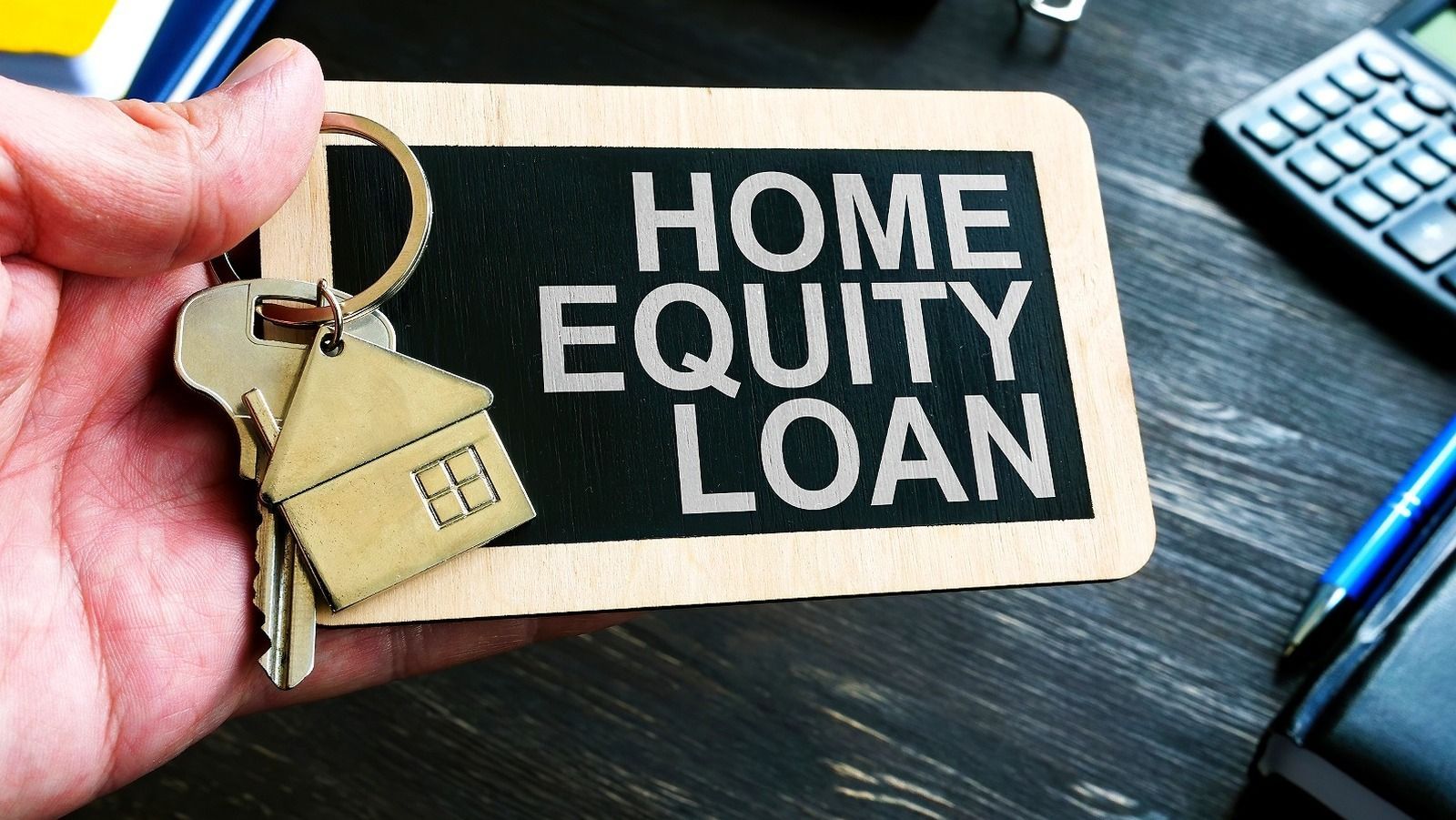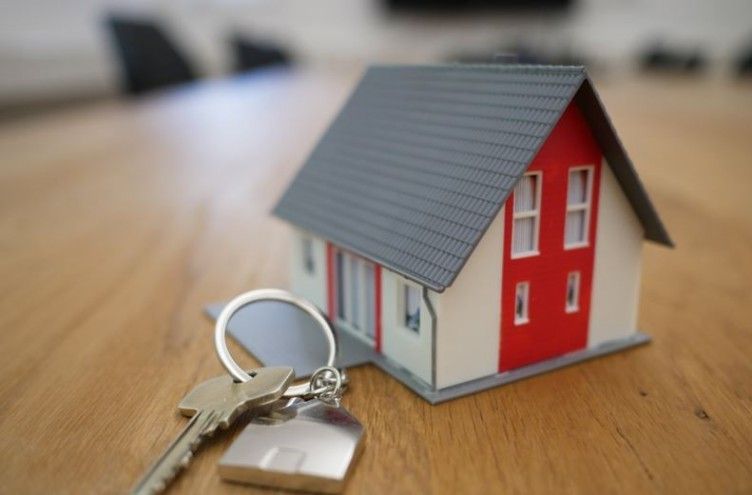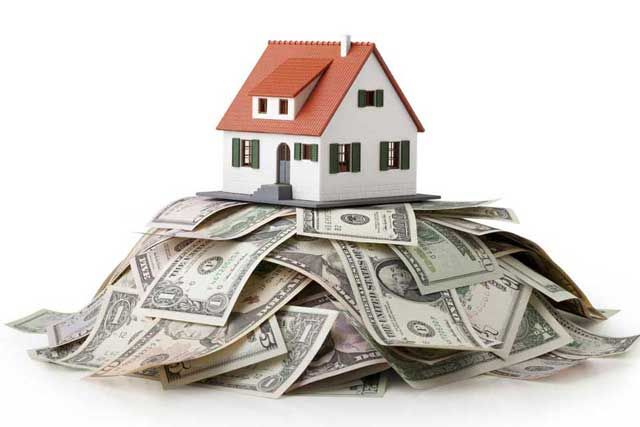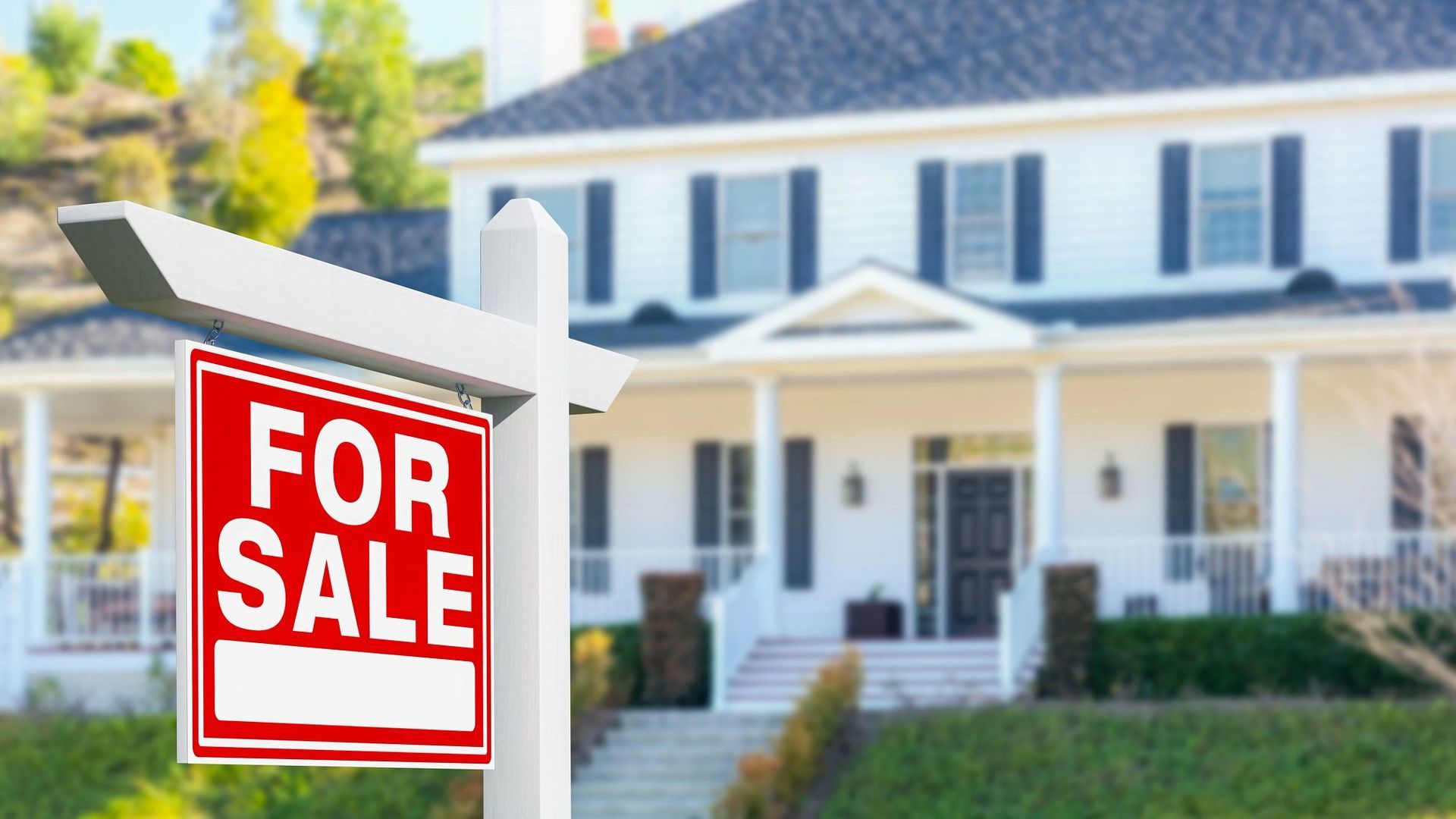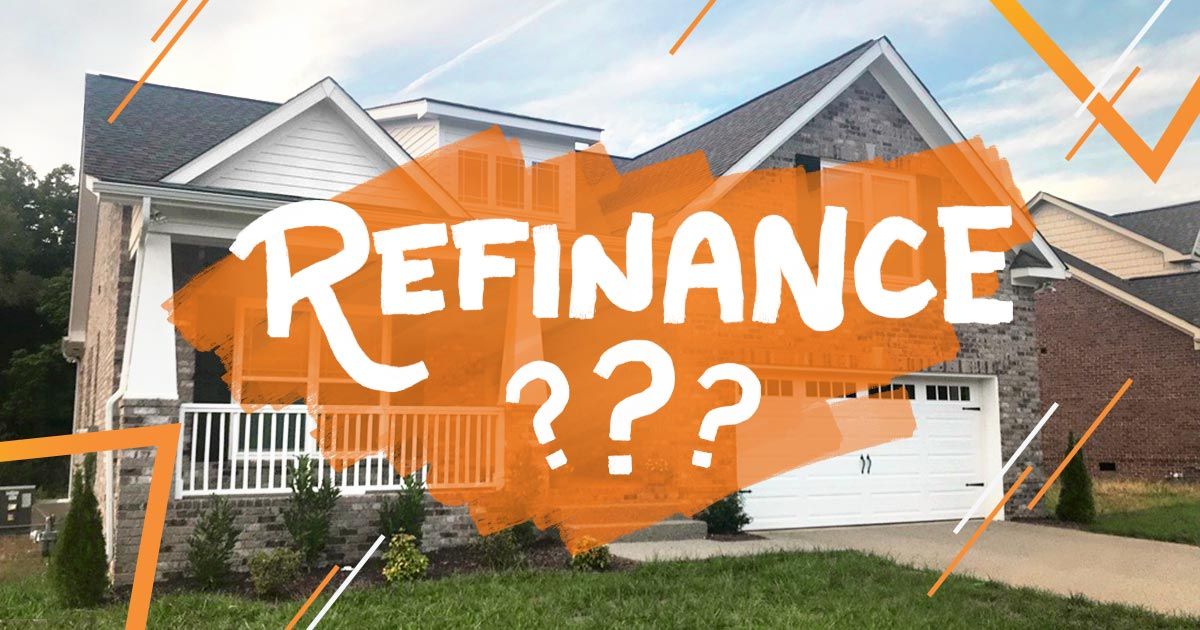What's the mortgage interest rate forecast for September 2024
Ralph DiBugnara • September 19, 2024
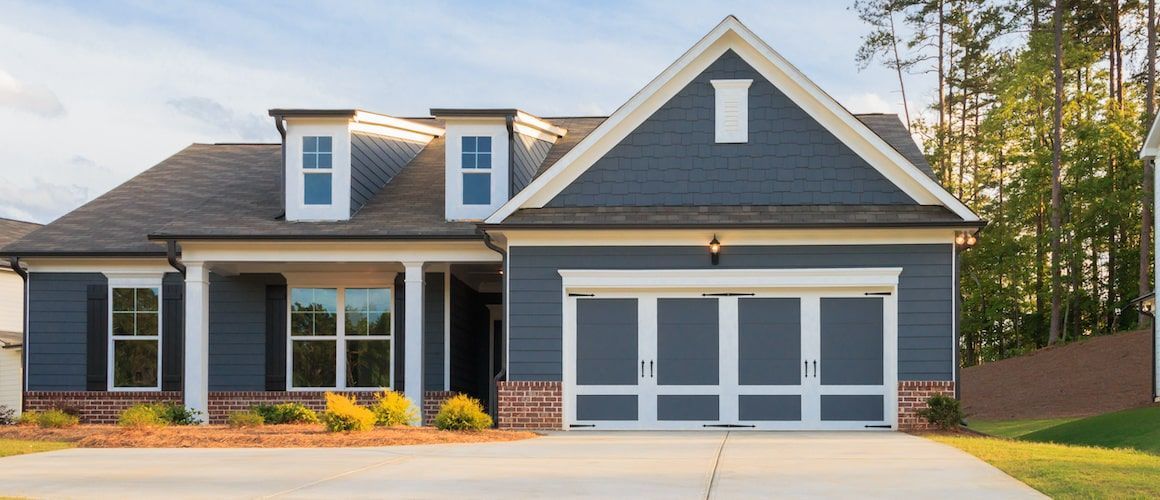
By Ralph Dibugnara September 12, 2024
If you have a 30-year home loan, refinancing to a 10-year mortgage allows you to pay
off your loan decades earlier and score a lower interest rate. But these savings come at
the expense of a considerably higher monthly payment, making it easy to outrun your
budget. Here’s a look at today’s 10-year refinance rates:
Current 10-year refinance rates
You may not see 10-year refinance rates advertised widely, but many mortgage
lenders offer conventional, decade-long terms, said Ralph DiBugnara, a veteran
mortgage industry executive based in New York.
“Ninety-five percent of the time, it’s the same rate as the 15-year fixed-rate
mortgage,” which are “usually the most advantageous rates in the market,”
DiBugnara said.
Like other mortgage rates, 10-year refinance rates fluctuate based on factors such as
the state of the economy and the overall credit market. The Federal Reserve has
maintained the federal funds rate after an unprecedented rate-hike cycle with 11
increases between March 2022 and November 2023 to fight post-pandemic inflation.
How 10-year refinance rates are trending
After reaching their highest point in more than 20 years in late 2023, mortgage refinance
rates have generally been trending downward.
“If the economy starts to cool and the Fed signals a shift toward lowering rates, we
might see a bit of a dip in refinance rates,” said Mike Roberts, a Utah-based mortgage
broker. “That would be great news for homeowners looking to lock in a lower rate.”
In mid-2024, Fannie Mae’s Economic and Strategic Research Group forecasted that 30-
year mortgage rates will average 6.4% in 2025. Following that estimate, we may see
(10- and) 15-year rates around 5.75% next year. (That’s because the 15-year rate has
been 66 basis points lower on average than the 30-year rate over the past five years,
according to our analysis.).
6 tips for scoring competitive 10-year refinance rates
1. Check your budget. The payments on a 10-year term will be much higher than
you’re currently paying if you have a 30-year loan, and you’ll need to have
documentation to verify that your income will cover the payments. Calculating
your monthly dues — and double-checking affordability via your budget — is a
wise first step.
2. Check your credit scores. You’ll likely need a 620 score to get a conventional
loan, but a higher score can result in a lower interest rate. Pay all of your bills on
time, make sure all your accounts are up to date and try to pay down debts
before applying for a refinance.
3. Figure your loan-to-value ratio. For a refinance, you may need to have at least
20% equity in your home to get the best mortgage rates. So, if your home is
worth $400,000, you’d need to have $80,000 in equity (.20 x $400,000 =
$80,000).
4. Shop around. Compare interest rates, closing costs and other expenses, which
the lender will list on a loan estimate document. By comparing the annual
percentage rate, or APR, via preapprovals, you can compare all the refinance
costs, not just the interest rate.
5. Consider discount points. Some lenders allow you to purchase mortgage
discount points in exchange for a lower interest rate. One point typically costs 1%
of the loan amount and may lower the interest rate by, say, 0.25 percentage
points — but the actual discount amount varies by lender.
6. Choose a loan. Select the lender you want to work with and lock in your interest
rate.
Here are examples of reputable mortgage refinance lenders that offer some of the best
10-year refinance rates:
How do refinance rates work?
While the overall economy and the rates set by the Federal Reserve influence mortgage
refinance rates, lenders also set rates based on the strength of your application.
“It’s a combination of factors — the overall economic climate, the Fed’s policies, your
credit score, your loan-to-value ratio and the demand for loans in the market,” said
Roberts. “Typically, refinance rates are a bit lower than purchase rates, but the gap has
been narrowing lately.”
For example, if you have high credit scores, you’ll be offered a lower rate than someone
with fair credit scores. You can also lower your interest rate by having more home equity
before refinancing. The state where the property is located can also affect the rate you
pay, as can the loan program you choose.
Related >> How mortgage rates are determined
Like new home loans, shopping around for the right refinance lender and choosing a
shorter term loan can also result in a lower mortgage rate.
Factors affecting individual 10-year refinance rates
Credit scores and history
Loan program
Rate type (fixed or adjustable)
Borrowing amount
Equity amount
Loan term length
Location
Getting a lower mortgage rate will help to lower your monthly payment. Even a slightly
lower mortgage rate can result in substantial savings over the 10- to 30-year loan
period.
Example: Say you refinance $300,000 on your mortgage. Here’s how changing the
term of your home loan could affect your monthly payment and total costs. (The
mortgage payments here cover principal and interest only.)
Term Fixed interest rate Monthly payment Total repayment
10 years 6.500% $3,406 $408,794
15 years 6.500% $2,877 $470,438
20 years 6.875% $2,303 $552,946
30 years 7.125% $2,021 $727,755
Pros and cons of a 10-year fixed-rate refinance
Pros Cons
Lower rates and higher overall savings (if
you’re refinancing from a longer term)
Accrue equity at a faster clip
Increase your odds of a mortgage-free
retirement
Less commonly available
among lenders
Stricter eligibility
requirements
Closing costs (2% to 6% of
the loan amount)
Higher monthly cost (than
longer loan terms)
Can get in a financial bind if
income drops
Less payment flexibility
Should you refinance your home loan to a 10-year term?
Refinancing to a 10-year term can save you many thousands of dollars compared to a
longer term loan. In exchange, you must commit a lot of money every month to paying
off your mortgage.
“If you can swing the higher monthly payment and you really want to be mortgage-free
faster, it’s definitely worth considering,” said Roberts. “The interest savings can really
add up over time.”
Some homeowners prioritize a mortgage-free future, but before committing to a 10-year
term, be sure your budget can handle the higher payment without being stretched too
far.
“The danger I see is, people take a 10-year fixed and then struggle with the higher
payment — it’s about 70% [more expensive on average] than a 30-year fixed,” said
Steve Hill, a California-based mortgage broker. “If you think your mortgage payment is
expensive now, try almost doubling it. It’s not for everyone.”
When it might be wise to refinance to
a 10-year term
When it might be unwise
You have a high, steady
income
You’re preparing for retirement
and will have a fixed income
within 10 years
You want to be mortgage-free
faster to focus on other
financial priorities
Your income could change or is
unpredictable
You need more room in your budget for
other obligations, such as high-interest
debt or investing goals
You have an ultra-low mortgage rate
You want flexibility to pay off your
mortgage on time or ahead of schedule,
as possible
Your current mortgage has a
prepayment penalty
How to apply for a 10-year mortgage refinance
Applying for a 10-year mortgage refinance is a lot like applying for a mortgage with
other terms, but some specific considerations are involved. Here are six steps to help
you through the mortgage refinance process.
1. Do the math. Use a mortgage calculator to estimate your monthly payments with a
10-year mortgage refinance. If you’re not confident that you can afford 120 straight
months of that payment, consider keeping a longer loan term and instead paying extra
toward the principal each month. “That way, if an emergency strikes, you're not stuck
[with] the higher payment,” said Hill.
2. Check your eligibility. Make sure your credit scores are the best they can be. You’ll
also want to check your home equity. The more equity you have, the less risky you are
to the lender, which could mean a better interest rate. Although it can be possible
to refinance a mortgage with bad credit, you’ll pay higher rates, potentially negating any
savings you’d see from refinancing.
3. Research lenders. Ten-year refinance loans aren’t as common as 15- and 30-year
terms, so narrowing your list of prospects should be easy. Get preapproved with at least
one bank, credit union and online lender each to compare rates — and choose the right
mortgage lender.
4. Gather your documentation and apply. Each lender has unique requirements, but
they’ll also require documentation to show proof of income, assets and debts. You’ll
likely be asked to hand over recent pay stubs and bank statements, for example.
5. Get a home appraisal. Before the mortgage underwriting process can begin, your
lender will need a new appraisal of your home to determine its current value.
6. Close on the loan. Your refinance loan will have a closing process and closing
costs just like your original mortgage. Like with your original home loan, you’ll have a
right of rescission, or a special grace period — until midnight of the third business day
after the transaction — to cancel the loan contract. If you have doubts about your ability
to afford the high payments of a 10-year term, this is your last chance to back out.
SHARE ON
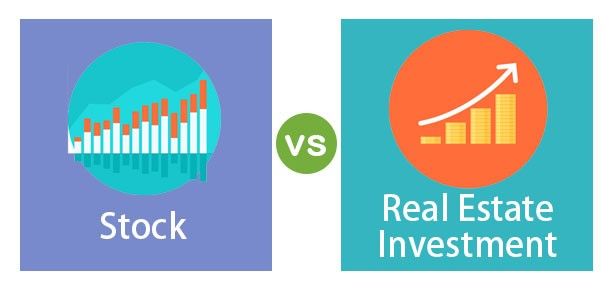
Stock Market vs. Real Estate - Choosing the Right Investment Path Video: https://youtube.com/shorts/A4aQtTK6tMw?si=tDhsd8zBcNYgwdJB Video Transcript: "Which is better: investing in the stock market or real estate? The stock market offers liquidity and the potential for high returns, but it can be volatile. Real estate provides tangible assets and steady income, yet requires more capital and management. Ultimately, the best choice depends on your financial goals, risk tolerance, and investment horizon." Article In the realm of wealth-building, two prominent avenues often come to the forefront: the stock market and real estate. Each offers unique opportunities and challenges, and understanding their nuances is crucial for making informed investment decisions. Stock Market: Liquidity and Accessibility Investing in the stock market provides a high degree of liquidity, allowing investors to buy and sell shares with relative ease. This flexibility is advantageous for those seeking short-term gains or needing quick access to funds. Additionally, the stock market offers a diverse range of investment options, from individual stocks to mutual funds and ETFs, catering to various risk appetites and investment strategies. Real Estate: Tangible Assets and Steady Income Real estate investment involves acquiring physical properties, which can generate consistent rental income and potential appreciation over time. This tangible asset class often appeals to investors looking for long-term stability and passive income streams. However, real estate requires significant upfront capital, ongoing maintenance, and can be less liquid compared to stocks. Making the Right Choice The decision between stock market and real estate investments hinges on individual financial goals, risk tolerance, and investment horizons. For those seeking liquidity and lower entry barriers, the stock market may be more suitable. Conversely, investors aiming for long-term growth and passive income might find real estate more aligned with their objectives.

By Ralph Dibugnara By David McMillin March 24, 2025 Key takeaways Before you start looking for homes, take time to evaluate your finances and improve your credit score. There’s a big difference between meeting the minimum credit score requirement and showing your lender a credit score well above 750. Remember to account for the variable expenses of owning a home, which include insurance, property taxes, maintenance and repairs. While sellers still have the edge in most parts of the country due to limited inventory, buyers are gaining more bargaining power. Work with an expert real estate agent to develop a negotiation strategy and score a better deal on your first home. If you’re still renting your place, the thought of buying a home can feel pretty overwhelming. A recent TD Bank survey of first-time homebuyers found that 64 percent of people who have never owned a home are concerned about affordability due to high mortgage rates. Despite those worries, nearly half are working to save up for a down payment. If you’re one of them, read on for some money-smart moves that can put you on the path to successfully buying a home. House hunting tips for first-time homebuyers 1. Check your credit (and work on it) The higher your credit score, the better the interest rate on your mortgage. Pull your reports Thoroughly understand where your credit stands by pulling a free copy of your report at AnnualCreditReport.com. It’s not a one-and-done free ticket, either; the site lets you pull your report every week without paying anything. It’s important to note that your credit report may look different depending on the credit bureau. There are three main credit reporting bureaus in the U.S.: Experian Equifax TransUnion It’s wise to look at all of your reports because you never know which report a lender will analyze. “Look for any errors or past-due accounts that might have gone to collections,” says Ralph DiBugnara, president of New York City-based Home Qualified, an online resource for homebuyers. “These liabilities can create roadblocks when you apply for a home loan. If anything is amiss, contact the creditor to see if you can sort it out.” Fix and then monitor your credit In addition to contacting a bureau if you spot any mistakes, follow these steps to keep your credit in the best shape possible: Pay down your credit card balances: Most lenders like to see a credit utilization ratio of 30 percent or less, according to Lindsey Shores, business development manager with SchoolsFirst Federal Credit Union. “For many people, this number is something they have to plan for and work to pay down to achieve,” she says. If you’re over that number, try to pay down your balances. Pay your bills on time: Follow this step whether you’re trying to buy a house or not — you can make or break your credit by making your payments on time every month. Take advantage of free credit monitoring tools: Many banks have free credit monitoring tools built into their mobile apps, giving you the ability to check your credit score easily and more frequently. “You’ll get notified if your credit score changes, or if there’s suspicious activity on your report,” says DiBugnara. 2. Nail down your budget When you’re building a budget to narrow your search for properties, don’t just think about how much house you can afford, but how much in recurring costs you can handle once you’ve purchased your home. Consider these key items: Principal and interest: This will be the bulk of your monthly payment, and if you take out a fixed-rate mortgage, this chunk will never change over the course of the loan. Homeowners insurance: How much you’ll pay to protect the property can vary widely. If you’re buying in an area with higher risks for flood, wildfire or other severe weather, you’ll need to be prepared for higher, ever-increasing premiums. Property taxes: Your property taxes will look different depending on the location, and, in most cases, will increase as your home’s value increases and/or your local government needs to raise them for their budget. HOA fees: If you’re looking at condos or homes in a homeowners association, ask how much you’ll pay each month in HOA fees. If you’re looking at buildings with a gym, pool and other amenities, these can get very steep. In addition to these expected expenses, it’s a good idea to put aside some money regularly for maintenance and unexpected repairs. “As a rule of thumb, I tell clients to prepare to spend 1 percent to 3 percent of the value of their homes each year on house [expenses],” says Steve Sivak, a certified financial planner and managing partner of Innovate Wealth. You might need to set aside more if the home you end up buying is older, bigger or has maintenance-heavy amenities, such as a pool. 3. Consider your needs and wants Finding the ideal location and address can take more time than you expect, so begin scouting neighborhoods early in the process. “Drive and walk around that area at different times of the day and night,” says Bill Golden, a Realtor and associate broker with Keller Williams Realty Intown. “This will help you get a feel for what you like and don’t like.” Along with pinpointing the neighborhood, now is a good time to narrow down your preferences for the home itself by considering these essential questions: What type of house are you looking for? What can you compromise on? What are the dealbreakers? Are you willing to look at older properties that may require some updates, or do you want a move-in-ready property? Think about what you like and dislike about where you currently live — that can help inform your list of needs and wants. 4. Get finances in place Regardless of income level, you should be able to document to potential lenders that you have a stable source of earnings. “Your income and how much you earn monthly will be scrutinized by lenders, who will look for a two-year employment history and want to see consistent income — whether you’re receiving a salary, hourly pay or are self-employed,” says Tom Hecker, a loan officer with Cherry Creek Mortgage. If you’re self-employed, be ready for closer scrutiny than someone getting a salary or hourly wage. In terms of your liquid funds and overall financial health, in addition to reviewing your credit report, mortgage lenders typically look at your bank statements from the last two months when assessing your application. If you plan to make any deposits into your checking or savings accounts from other assets — such as a down payment gift — do it before that 60-day window. This gives the funds time to “season.” And it’s best to avoid opening new credit accounts or loans, or racking up more debt, at this stage, DiBugnara adds. All those activities could possibly ding your credit report. Learn more: How to save for a down payment Tips for finding the right mortgage 5. Comparison shop mortgage lenders At this point, you should know what monthly payment you’re comfortable with, what areas you can afford and how much you can put down. Now it’s time to shop for a mortgage. Consider these factors: Comparison shop: Compare mortgage rates from at least three different types of lenders, as well as different types of mortgages. What others have to say: Read customer reviews for lenders online to get a sense of what the experience is like with individual lenders. Interactions with the lender: Even “in this market, you can find competitive rates and service, but you want to pay close attention to lenders’ responsiveness and communication,” says DiBugnara. The mortgage terms: It’s also a good idea to focus on not just the rates lenders quote you but also all the mortgage terms. What are the late fees? What are the estimated closing costs? Is there a prepayment penalty? If you’re able to get a mortgage with the bank where you already have accounts, will you get a better deal? Sometimes, it makes sense to choose a loan with a slightly higher rate if the other terms are more favorable overall. Learn more: Different types of mortgage lenders 6. Get preapproved Once you settle on a lender, get preapproved for a mortgage. This will require documentation of your income and finances, and organizing your paperwork in advance can help the process run smoothly. It will also prepare you for mortgage underwriting, which will require similar documentation. Unlike prequalification, which is a projected loan size you’ll be able to get, a preapproval is an official letter from a lender stating exactly how much it will loan to you. A preapproval will put you in a much stronger position when you’re making an offer on a house, and it will ease the process once your offer has been accepted and you’re actually applying for your loan. Preapprovals usually expire after 90 days, says DiBugnara, so ask your lender how long yours will be good for. If you’re a first-time homebuyer with significant debt or so-so credit, you might want to apply for a preapproval as soon as possible to identify issues to fix. “Once you have a preapproval in place, keep sticking to your budget and savings plan and continue to pay all debts on time,” says Hecker. “Try not to make any extraordinary purchases or take on extra debt, either.” 7. Look for down payment assistance There are many first-time homebuyer and down payment assistance programs, including at the local, regional and national level, that can help cover your down payment or closing costs. These aren’t for everyone, though. To score some down payment assistance, be prepared for these eligibility requirements: Earn less than a specific amount per year, which typically varies by location and household size Purchase a home that does not exceed a maximum amount, which can vary based on targeted and non-targeted areas Take out a loan offered in conjunction with the state housing authority These programs are typically limited to borrowers with an income below a certain level (based on location), and can impose a cap on the home’s price, too. Keep in mind that many of these programs have terms that stipulate you must live in the home for a certain period of time to qualify for forgiving the loan and/or avoiding a recapture tax penalty that can come into play if you sell the property earlier than expected and earn a profit. Often, your loan officer can provide info on the available programs and what you might be able to pair with your mortgage. Tips for buying your first home 8. Work with a real estate agent After you have your financing squared away and a preapproval letter in hand, your next step as a first-time homebuyer is to hire a real estate agent or Realtor. An experienced real estate agent who knows the area you’re looking to buy in especially well can advise you on market conditions and whether homes you want to make offers on are priced properly. Your agent can also identify potential issues with a home or neighborhood you’re unaware of, and go to bat for you to negotiate pricing and terms. You can start by asking friends, relatives or co-workers for referrals. Interview several prospective agents to get a feel for who may be a solid match in terms of personality and expertise. “Don’t just pick [an agent] blindly — make sure it’s someone who works in the general area you’re looking in and whom you feel comfortable with,” says Golden. Offerings “come up every day, and a good Realtor will be on top of that and get you to see new listings as soon as they become available.” 9. Negotiate with the seller Even when you see the home of your dreams, don’t be afraid to negotiate the price with sellers. While it’s difficult in red-hot real estate markets, some areas of the country are beginning to see more homes sell for less than the asking price. As you work to get a good deal, consider these bargaining tactics: Use comps to justify a lower offer. A low offer can offend a seller, so work with your agent to look at comps that justify why a seller should consider your terms. Did a nearby property with an additional parking spot recently sell for the same amount? Are there other similar homes with nicer amenities listed for less? Back up your bargaining with evidence from the rest of the market. Ask for concessions based on the home inspection report. Is some of the electrical wiring incorrect? Does the furnace seem like it’s nearing the end of its lifespan? Are the windows going to need to be replaced soon? If your home inspector uncovers some minor issues with the home, don’t be afraid to ask for concessions that will require the seller to cover a chunk of your closing costs. And if the inspector uncovers some major issues, be aggressive in your negotiations — and don’t be afraid to walk away from the deal altogether. Request a different closing timeline. Negotiating your home purchase isn’t just about money; it’s also about time. Depending on your needs, you can ask the seller for a closing date that gives you more or less time to get the deal done. For example, if you really want to avoid paying another month of rent, don’t be afraid to request that the seller be prepared to move out earlier. 10. Draw up a contract When you find a home and prepare to make an offer, work with a real estate attorney to spell out any conditions or situations that will allow you to walk away from the deal. These are known as contingencies, and they often include: Major issues with a home inspection Mortgage application denial A lower appraisal than the offer price If these terms are spelled out in writing with deadlines, you’ll have an out if the transaction doesn’t go as planned — and get your earnest money deposit back, too. Bottom line For a first-timer, buying a home can feel overwhelming and endless. But breaking down the process into steps and tackling them one at a time can help you stay focused and get the job done. Doing your research in advance and working with a trusted real estate agent can help you stay on track throughout the process. Keeping your finances steady and limiting other big-ticket purchases can also help you qualify for a loan and get into your first home.
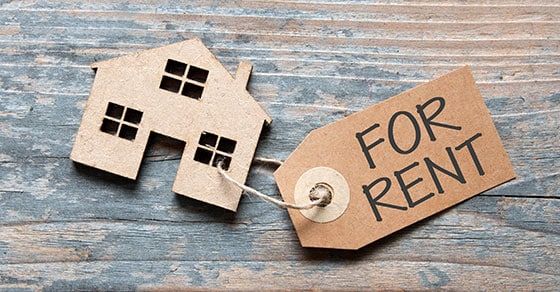
By Ralph Dibugnara March 6, 2025 By: Paul Centopani February 26, 2025 https://themortgagereports.com/32667/mortgage-rates-forecast-fha-va-usda-conventional Mortgage rate forecast for next week (Feb. 24-28) Mortgage rates came down for the fifth straight week. The average 30-year fixed rate mortgage (FRM) declined to 6.85% on Feb. 20 from 6.87% on Feb. 13, according to Freddie Mac. “The 30-year fixed-rate mortgage has stayed just under 7% for five consecutive weeks and in that time has fluctuated less than 20 basis points. This stability continues to bode well for potential buyers and sellers as we approach the spring homebuying season,” said Sam Khater, chief economist at Freddie Mac. Will mortgage rates go down in March? “With consumer confidence plummeting and a great deal of uncertainty and volatility in the market as the Trump Administration continues to promise high tariffs and mass deportations, there’s been a flight to safety in the bonds market.” -Rick Sharga, CEO at CJ Patrick Company Mortgage rates fluctuated significantly in 2023, with the average 30-year fixed rate going as low as 6.09% and as high as 7.79%, according to Freddie Mac. That range narrowed in 2024, with a spread of 6.08% to 7.22%. Find your lowest mortgage rate. Start here (Feb 27th, 2025) With the economy possibly heading into a recession, we may have already seen the peak of this rate cycle. But if inflation rises, mortgage rates could uptrend. Of course, interest rates are driven by many factors and notoriously volatile, so they could change direction any given week. Experts from Realtor.com, First American, Home Qualified and CJ Patrick weigh in on whether 30-year mortgage rates will climb, fall, or level off in March. Expert mortgage rate predictions for March Ralph DiBugnara, president at Home Qualified Prediction: Rates will moderate “The market is starting to slowly but steadily see some small movement of mortgage rates coming down. I believe March will be around the same averages we have seen through February. Historically, we would see the greatest drop in mortgage rates come during the spring buying season. If inflation ticks down and consumer spending slows along with increased seasonal home buying, we should see a significant reduction in interest rates.” Hannah Jones, senior economic research analyst at Realtor.com Prediction: Rates will moderate “Mortgage rates are likely to remain high through March. We may see some volatility as markets weigh the implications of the Trump administration’s various economic proposals and policy actions. PCE inflation data could influence rates, especially if it comes in higher-than-expected. Overall, we expect both inflation and mortgage rates to be higher for longer than initially expected, but the path is not yet clear due to considerable policy uncertainty.” Rick Sharga, CEO at CJ Patrick Company Prediction: Rates will moderate “With consumer confidence plummeting and a great deal of uncertainty and volatility in the market as the Trump Administration continues to promise high tariffs and mass deportations, there’s been a flight to safety in the bonds market, driving down bond yields. Because of those lower yields, we’re seeing what is probably a temporary dip in mortgage rates, which could reverse course suddenly if the next inflation report comes in higher than expected. But for now, it looks like rates for a 30-year fixed-rate loan will rest somewhere between 6.75-7.0% for at least the next few weeks, while the market settles into its new reality.” Sam Williamson, senior economist at First American Prediction: Rates will moderate “With a strong U.S. labor market and inflation running hotter than anticipated, the Federal Reserve is likely to hold off on cutting interest rates at its upcoming March meeting. This limits downward pressure on 10-year Treasury notes, which mortgage rates tend to follow. Consequently, we expect mortgage rates to remain stable in March, fluctuating in the upper 6% range.”
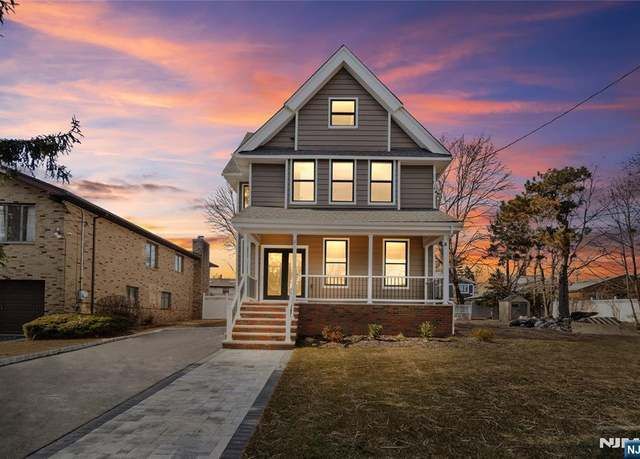
By Ralph Dibugnara February 27, 2025 By Erik Martin February 4, 2025 Best Ways to Tap Home Equity for Home Improvements | Mortgages | U.S. News Using your home equity financing products may allow you to borrow more at a lower interest rate compared to credit cards or personal loans. Key Takeaways Tapping into home equity can provide substantial funds for home improvements at lower interest rates than personal loans or credit cards. Home equity loans, HELOCs, cash-out refinances and FHA 203(k) rehab loans have distinct advantages and drawbacks. While using home equity for renovations can enhance property value, it's crucial to consider closing costs, foreclosure risk and the impact of fluctuating property values. Thanks to strong home appreciation, Americans have accumulated $35 trillion in home equity, which can fund renovations and improvements that boost their home's appeal and resale value. There are several popular ways to liquidate home equity, including a home equity loan, home equity line of credit, cash-out refinance and FHA 203(k) rehab loan. Homeowners should consider each home improvement loan's pros and cons and determine which option will best meet their needs. You don't necessarily have to pull from your home equity to fund a major remodel or other home improvement goal. Other options include taking out a personal loan, using credit cards, or applying for a personal line of credit from a bank or lender. However, a home equity loan or line of credit is often a smarter move. Loans backed by home equity are less risky for lenders, so their interest rates are lower and terms are more favorable. Take a closer look at the advantages and disadvantages of using home equity to improve your property. SEE: Best Home Equity Loans Pros of Using Home Equity for Remodel You Can Borrow More If you have a lot of unused home equity, you may qualify to borrow a lot more than the limits imposed by non-home-equity financing options, like personal loans or credit cards. Consider that the average home renovation project budget in 2025 is more than $52,000, with typical expenses ranging from around $19,000 to more than $88,000 for most homeowners, according to digital marketplace HomeAdvisor. "You are borrowing against your home when you tap home equity, and right now people are sitting on a ton of equity," says John Horton, senior vice president of mortgage lending with A and N Mortgage Services Inc. "Over the last seven to eight years, the average increase in home equity has been between 9% and 10% per year." Interest Rates Are Lower Home equity financing products typically offer lower interest rates than credit cards or loans not backed by real estate. Paying a lower rate means potentially saving thousands over the life of your loan. A Flourish chart Enjoy Longer Repayment Terms Home equity repayment terms generally run between five and 30 years. Extending repayment reduces your payment and can make the loan more affordable. Most personal loan providers set their maximum term at five to seven years. Reap Tax Savings "You could be eligible for a tax deduction on the interest you pay for a home equity loan or HELOC if you use it for a home improvement project, although you'll need to consult with your tax advisor to see if you qualify," says Aaron Craig, vice president of mortgage and indirect sales for Georgia's Own Credit Union. Cons of Using Home Equity for Remodel You'll Pay Closing Costs Expect to pay 2% to 5% of the loan amount or credit limit at closing. Fees and interest rates can vary widely among lenders and products, so it's important to compare. Your Home Is at Risk Home equity financing is secured by your home. Missing home equity loan payments could lead to default and foreclosure, even if your first mortgage is in good standing. You May Pay More Interest Than You Think The longer repayment terms available with home equity financing are a double-edged sword. That's because extending the repayment period to lower what you pay each month increases your interest cost over the life of the loan. You can calculate the total interest expense by multiplying the monthly payment by the number of scheduled payments and then subtracting the loan amount. Interest Rates and Payments Can Increase Many HELOCs come with variable interest rates that can change your payment and costs significantly over the life of the loan. In addition, HELOC terms are divided into a drawing phase, typically five to 10 years, during which the borrower can make a minimum or interest-only payment. Once the drawing period ends, the entire balance must be repaid over the remaining loan term, and payments can rise sharply. Many borrowers are unprepared for this. Getting Approved Could Take Longer The lender must appraise the property in addition to evaluating your credit history, income and debts. "Since it is a loan secured on your home, home equity financing usually takes a little longer to fund than a consumer loan alternative, like an unsecured personal loan. But this isn't a big deal unless you are under a tight deadline and need the money quickly," Craig says. It Could Lead to Negative Equity Tapping a substantial portion of your home's equity can be risky if property values decline, leading to negative equity. This occurs when your outstanding loan balance surpasses your home's current market value, thereby limiting your ability to refinance or sell the property. Calculate: Use Our Free Mortgage Calculator to Estimate Your Monthly Payments. Best Home Improvement Loans Now that you have a better idea of the pluses and minuses of going the home equity financing route, which borrowing vehicle is best for you? HELOC A HELOC is a flexible line of credit that works similarly to a credit card. You can borrow as needed up to a preset limit and only pay interest on the amount you use. HELOC lenders generally allow total borrowing against 80% to 90% of the home's value. If your home is worth $100,000 and you owe $70,000 on your existing mortgage, you may be able to borrow an additional $10,000 to $20,000 with a HELOC. The interest rate on a HELOC is typically variable, meaning it can fluctuate depending on market conditions. Some lenders offer fixed-rate HELOCs or convertible HELOCs, which give the borrower more control over their interest rate and payment. A HELOC operates in two main stages: the draw period and the repayment period. During the draw period, you can borrow against the line of credit and are only required to make minimum or interest-only payments on your balance. The draw period typically lasts five to 10 years. Once the loan moves into the repayment phase, you can no longer access the credit line. The required payment will be adjusted to cover your interest and pay off your balance during the remaining loan term. "HELOCs are a great way to access home equity, acting almost like a credit card on your home," says Ralph DiBugnara, president of Home Qualified. "This is a line of credit that traditionally follows the prime borrowing rate, which historically is somewhere between 0.35% and 0.5% above the average 30-year mortgage interest rate. Right now, however, that is a disadvantage because it's providing a rate in the mid- to high-7% range." Even a HELOC with a variable interest rate won't necessarily cost you more than a fixed-rate home equity loan. "Your payments could actually decrease if interest rates fall. Interest rates are usually lower on a HELOC than on a home equity loan," Craig says. Home Equity Loan As with a HELOC, you can likely borrow against 80% to 90% of your property value with a home equity loan. You receive a lump sum when you close your loan, and you repay it with fixed monthly payments. Home equity loan terms typically run between usually five and 20 years, with some lenders offering up to 30 years. "It's a solid choice if you have a well-planned project and can comfortably manage the repayments," says Carl Holman, director of communication and content for A&D Mortgage. However, you could underestimate the project and end up needing more money than you agreed to borrow, "or you could overspend by borrowing more money up front than what the project ends up costing," cautions Craig. "You also have limited flexibility to borrow any more funds using your home equity if additional dollars are needed for the project. That means you'd have to secure an additional loan." Cash-Out Refinance A cash-out refinance involves replacing your existing mortgage with a new, larger loan, allowing you to take the difference in cash. Lenders typically approve cash-out refinances up to 80% of your home's appraised value. "A cash-out refi provides a large lump sum at closing and may come with a lower rate than a home equity loan or HELOC. Plus, the interest could be tax deductible," Holman says. "However, it reset your primary mortgage loan term, which could mean paying more interest over time." Also, closing costs – usually 2% to 5% of your loan amount – could be significant. Cash-out refinancing can be a good option if you're looking to tap into your equity and can secure a better rate for your primary mortgage. Craig adds that a cash-out refinance can be more budget-friendly because you only have one payment to make instead of a monthly bill for your mortgage and a separate bill for your HELOC or home equity loan. However, a cash-out refi can be quite costly if your refinance amount is large and the equity cash-out portion is relatively small. That's because the closing costs apply to the entire mortgage, not just the cashed-out equity. Read: Best Home Improvement Loans. FHA 203(k) Rehab Refi The FHA's 203(k) Rehabilitation Mortgage Insurance program enables homebuyers to finance both the purchase and renovation costs of a property with one loan. If you already own a home, you can also refinance your existing mortgage while incorporating the costs of necessary repairs or improvements into the refinance. This approach is particularly advantageous if you have little equity, as the refinance loan-to-value is based on the improved value of the property, not its current value. The limited 203(k) loan allows financing up to $75,000 for non-structural repairs and improvements, such as kitchen remodels or new carpeting. There is no minimum borrowing amount, and it's suitable for minor renovations. The rehabilitation period for this loan is nine months. The standard 203(k) loan covers more extensive renovations, including structural repairs, and has a minimum borrowing amount of $5,000. It mandates the involvement of a 203(k) consultant to oversee the project and has a rehabilitation period of 12 months. "These loans are accessible to borrowers with lower credit scores and smaller down payments and offer a streamlined option for smaller projects," Holman says. "However, it requires more paperwork, FHA inspections, and mortgage insurance premiums, and it's limited to primary residences. But it's a solid choice for buyers tackling major renovations." Which Is the Best Option for You? The right home equity financing choice for you depends on your needs, budget, timeline and other factors. A home equity loan is best for a borrower who currently has a very low interest rate on their first mortgage, can afford additional loan payments, has a pretty good idea of how much the home improvements are going to cost, and likes the stability of a fixed rate and fixed term. A HELOC is better for someone who isn't quite sure how much home improvements are going to cost and wants some flexibility but is OK with a variable interest rate. If you have a high interest rate on your first mortgage and can benefit from refinancing to a lower rate, a cash-out refinance could be a good option. A homeowner with low equity and limited funds available should consider an FHA 203(k) loan.
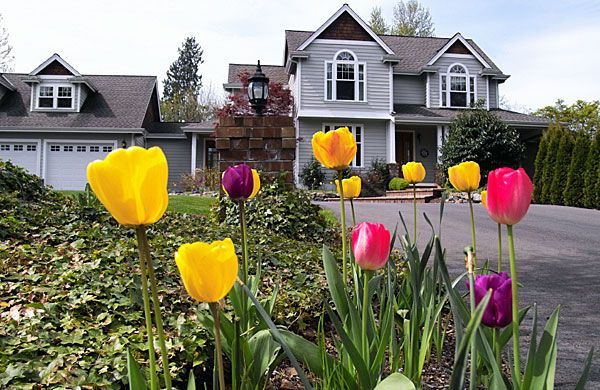
By: Ralph DiBugnara February 6, 2025 Mia Taylor Michele Petry January 27, 2025 Key takeaways Late spring and early summer are typically considered peak homebuying season. However, the increased competition among buyers can lead to higher prices. Buyers hoping to score a deal may want to wait until fall or winter, when competition — and prices — typically ease. Historically, spring and summer have been the busiest times in the real estate market. But the traditional seasonality of homebuying and selling was upended by the pandemic: Home sales slowed significantly amid stay-at-home orders, then dramatically spiked, and the market remained volatile for quite some time. The good news is, things have since returned to something closer to normal. One positive sign: After years of a distinct lack of available homes for sale, which kept homebuyers at a disadvantage, Realtor.com is forecasting an 11.7 percent increase in existing housing inventory for 2025. This increase would bring more balance to the supply-and-demand metric — and also more leverage for buyers. In other words, seasonality may once again become the most important factor in determining the best time of year to buy a house. Here’s what to know about buying in high season versus buying in a more traditionally slow period. Buying a house in spring or summer Spring and early summer are the busiest and most competitive time of year for the real estate market. There’s usually more inventory listed for sale than other times of year, and home prices tend to be steeper to reflect the increased demand. Since 2011, the months of February through June have been the most lucrative time to sell, according to a 2024 study by ATTOM Data Solutions, with May in particular earning sellers an average premium of 13.1 percent above market value. The other months in the range all yielded premiums ranging from 12.2 percent to 12.8 percent. “Typically, sellers choose spring and summer as the time to list as the majority of buyers are out in the market,” says Ryan Jancula, principal and lead broker with Jancula Group at Compass in Los Angeles. “This is a double-edged sword for a buyer, as you will be met with more opportunities but [also] much more competition, which may lead to further increase in prices or less desirable sale terms.” If you’re hoping to save some money and your timeline is flexible, consider waiting until the rush is over and not starting your home search until mid- or late-summer. Keep in mind: The most expensive month of the year to purchase a home is May, when seller premiums are as high as 13.1 percent above market value, according to ATTOM data. Pros More listings: The increase in springtime and summertime listings means buyers have more options. “Spring is when the most inventory comes to market and there is likely more choice,” says Victoria Vinokur, a broker with Brown Harris Stevens in New York City. Better weather: During warmer months, buyers are more easily able to get out and about to see homes. Home exteriors are easier to see with no snow, and interiors look more inviting when there’s plenty of sunshine coming in. More convenient timing: “If buyers have school-age kids, this is the best time to purchase so it doesn’t break up the school year,” says Jane Katz, a New York City real estate agent with Coldwell Banker Warburg. “The transaction should close by [the end of] summer, so kids can start in their new school in September.” Cons Increased competition: This is often the peak time for the real estate industry, which means more buyers are on the hunt — so expect plenty of competition. Higher prices: With increased competition comes multiple bids and, likely, higher home prices. Sellers have the upper hand when demand is strong. Moving costs: Moving is expensive, and moving companies’ prices are also impacted by supply and demand. Come summer, when demand increases, so will the prices you’ll pay to hire pro movers. The same move will cost you less during winter. Buying a house in fall or winter Buying off-season has its benefits, though. The ATTOM study, which analyzed 59 million single-family home and condo sales between 2011 and 2023, showed that October is the month with the lowest seller premium by far at 8.8 percent, compared to May’s 13.1 percent. The next lowest were September and November, both at 9.5 percent. That means October is when homebuyers are likely to get the best deal. In fact, a recent Zillow report declared early fall to be “the next housing sweet spot.” Keep in mind: The least expensive month of the year to purchase a home is October, when seller premiums are at their lowest, according to ATTOM. “Late summer and winter tend to be quieter, with a better chance for a buyer to find less competition and a deal,” says Ralph DiBugnara, a vice president at New American Funding and founder of Home Qualified. Pros Less competition: Fewer buyers are looking for homes during the winter, which means there’s less competition to face for available listings. Less-intense competition also typically means more time to spend making a decision. More leverage: With fewer buyers, there’s more opportunity to negotiate the best deal possible. “In winter and especially around national holidays, sellers will see less buyer traffic and be more willing to negotiate,” says DiBugnara. Motivated sellers: During the quieter fall and winter months, when fewer prospective buyers are shopping, home sellers may be more willing to lower their prices, or offer concessions, to attract those prospective buyers who are still looking. Cons Less inventory: Fewer homes are typically listed on the market during winter, which means fewer choices for buyers. Weather issues: Depending on where in the country you live, winter weather can make viewing homes far more challenging. Closings may even be postponed due to adverse weather conditions. Home inspection difficulties: It can also be more difficult to inspect homes in cold weather. If there’s snow coating a roof, for example, it can be challenging for an inspector to assess its condition. Best time to buy a house: Prices and seasonality Just because spring is the industry’s prime time doesn’t automatically mean it’s the right time for you. You have to consider your personal circumstances as well as seasonality — for example, if you are getting married or having a baby in August, you may not be able to wait nearly a year for a larger home. “While spring is typically referred to as the homebuying season, that doesn’t necessarily guarantee that it is an optimal time to buy,” says Mark Hamrick, Bankrate’s senior economic analyst. In addition, if price is of concern to you, you may in fact be better off waiting out the rush. This chart illustrates median home prices since the start of the COVID-19 pandemic, using data from the National Association of Realtors. Once the chaos of the early pandemic died down, the highest price spikes were uniformly in June or July, and the lowest prices occurred in the dead of winter. Other factors to consider A number of other factors can impact when might be the best time to buy a house. Here are a few more things to consider. Mortgage rates: Mortgage interest rates are not seasonal, but they certainly fluctuate. Throughout 2023, rates spiked sharply. They then dropped, then rose again. And despite high hopes, the Fed cuts in 2024 did not provide much relief for mortgage rates, which remain elevated. “While mortgage rates have edged down from their highs, they are likely to remain above their pre- and early-pandemic levels, when 3 percent to 4 percent rates were common,” says Hamrick. Lack of inventory: The shortage of available homes that plagued the country for the past few years has begun to ease, but home prices remain stubbornly high. Realtor.com predicts prices will continue to inch upward throughout 2025, albeit somewhat more slowly than previous years. Recession fears: When consumers feel nervous about the economy, especially amid talk of a possible recession, they tend to back off of spending. This holds particularly true for big purchases like a home. If you worry about your income or job security should a recession happen, waiting to buy might be wise, regardless of season.
let us connect you to
investors in real estate
Looking to build a home, buy a fixer upper
& repair or invest in a real estate project long term?
We can connect you to experts who have loan products.

